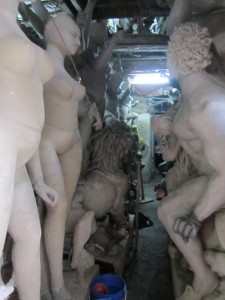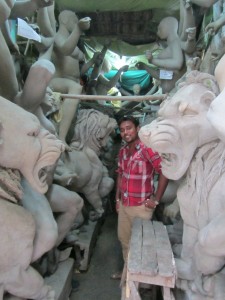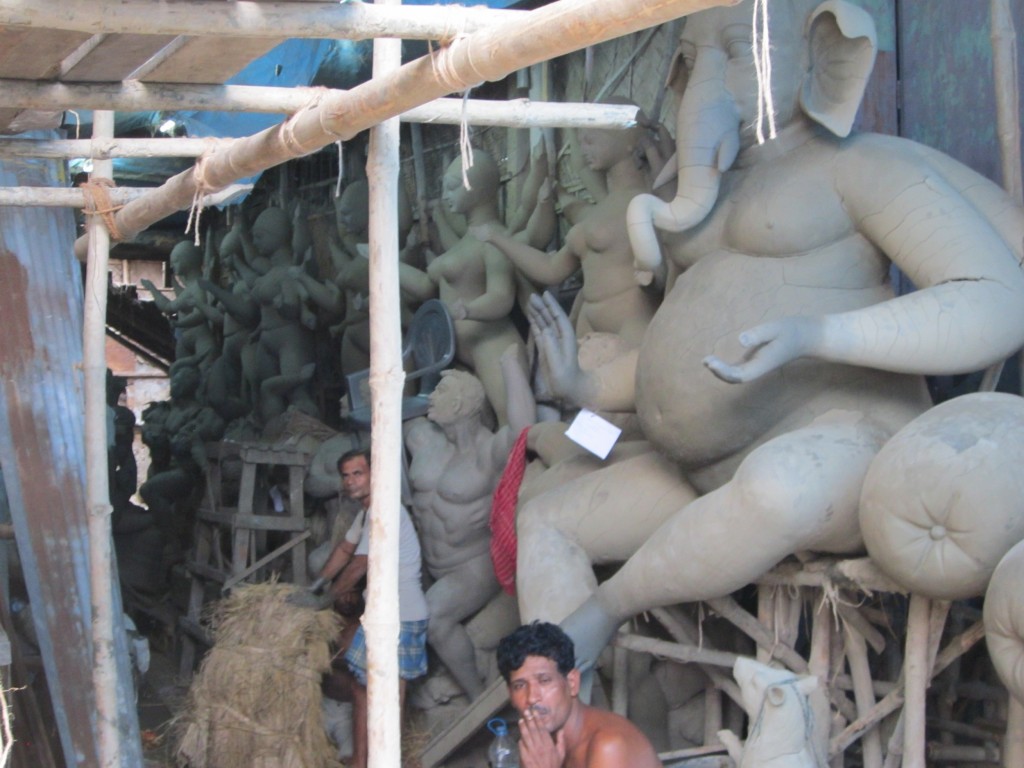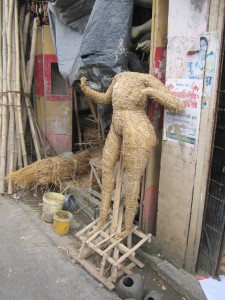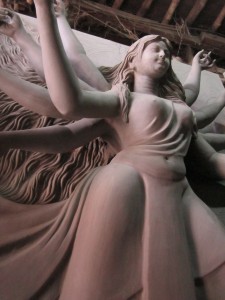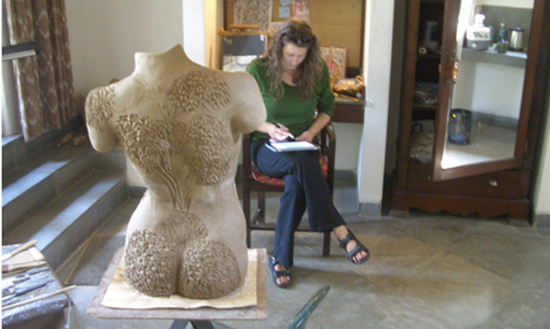“Beauty and Chaos” – one way to describe that which is Durga Puja!
We heard this phrase first from photographer Dev Nayak, when Stan and I met him while undergoing some serious “pandal-hopping” with Partha Dey in South Kolkata. Dev’s actually comment was, “Beauty and chaos, in India you can’t have one without the other!”
It’s Monday evening, the day before Durga Puja celebrations are in full force for the next five days. Even so, as the evening progresses, the streets began to swell with people eager to preview this year’s creations. Pandals (the name for the structures that are build to house the Durga Puja sculptures) are everywhere, in the numerous parks, jutting out into the street, tucked into every possible nook and cranny.
This most spectacular of spectacles could be likened to a combination of Disney World, Las Vegas, and Burning Man (sans nudity). We saw everything from the grandest commercial extravaganzas to tiny, lovingly heartfelt private family shrines (the truth: these are my faves). The estimate that I’d heard several times was upwards of 15000 Durga images in Kolkata alone! Most pandals are sponsored by clubs and other local community organizations, with some sponsorship from local businesses.
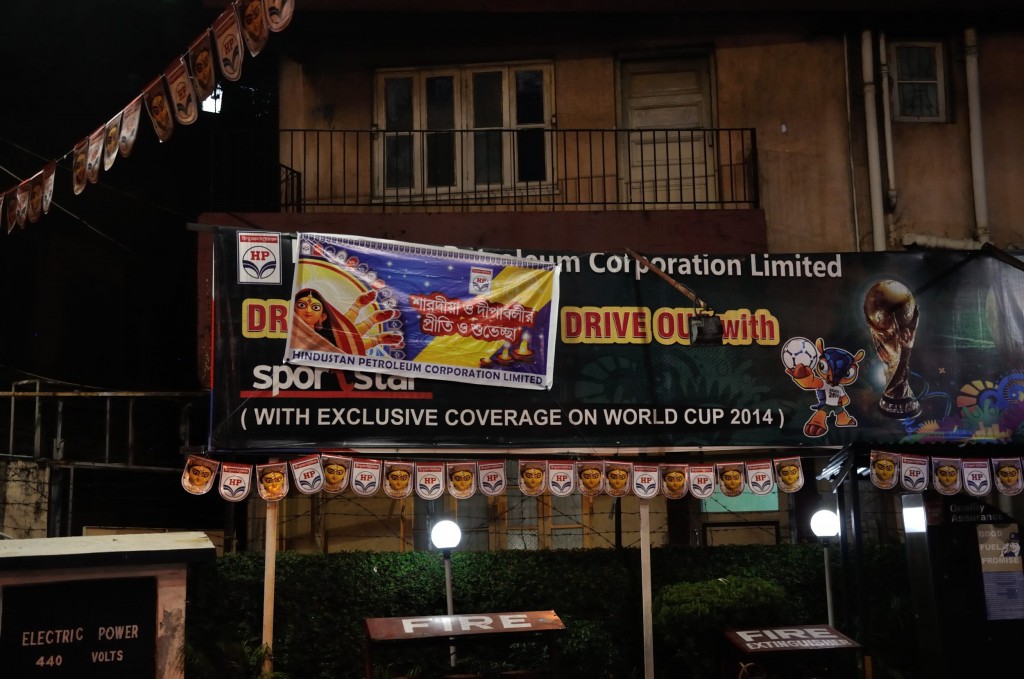
The biggest, most elaborate pandals usually have snagged big corporate sponsorships, are themed, and often have renowned artists and designers at their organizational helms. The planning for next year’s big-budget pandals begins almost immediately after the prior year’s celebrations! There are also many sponsored pandal contests, with celebrities and other prominent personages as their judges. At the heart of each pandal, somewhere within, often underneath a plethora of clothing, hair, props, and other decorations, are the clay, straw, and bamboo figures that brought me to Kolkata.
Enough chatter for the moment, yes? Time to show you some pics!
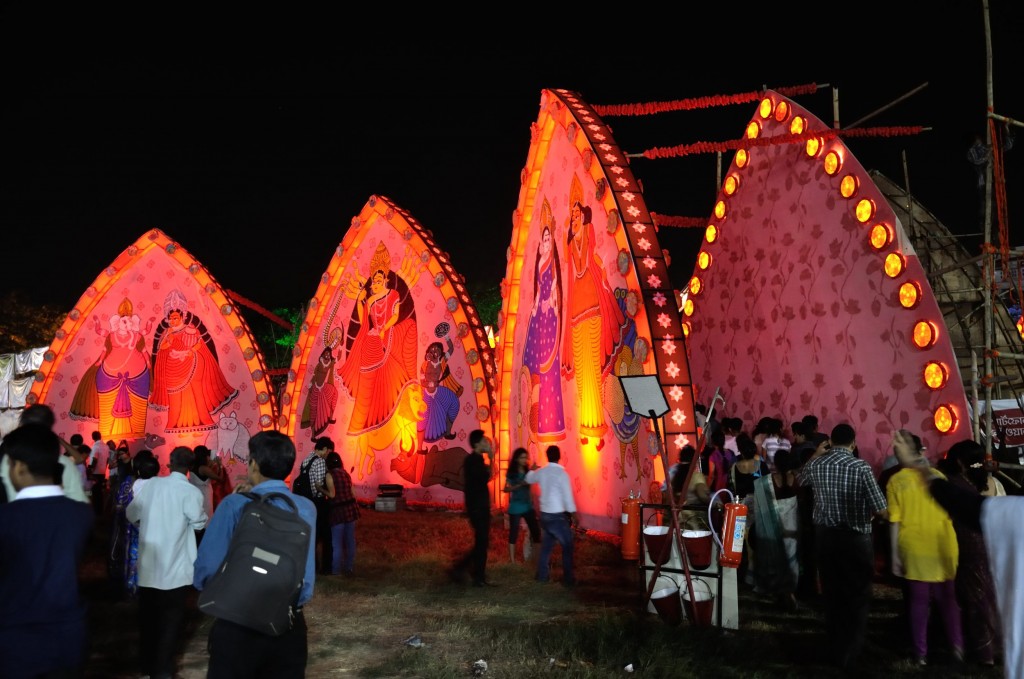
Enter into a giant lotus with whirling imagery
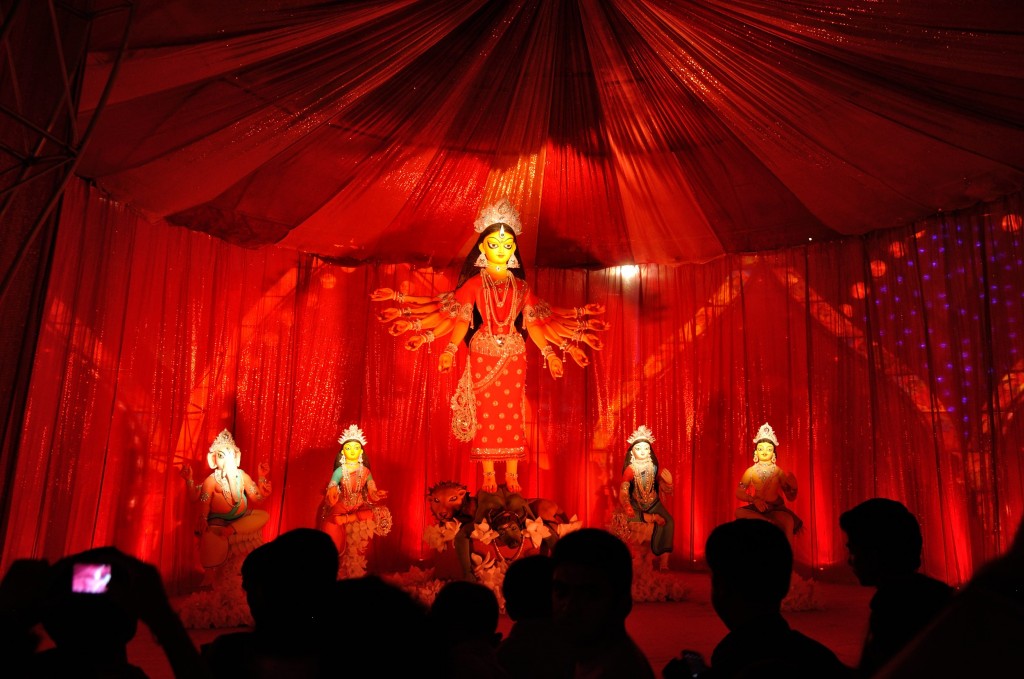
Durga looms above it all
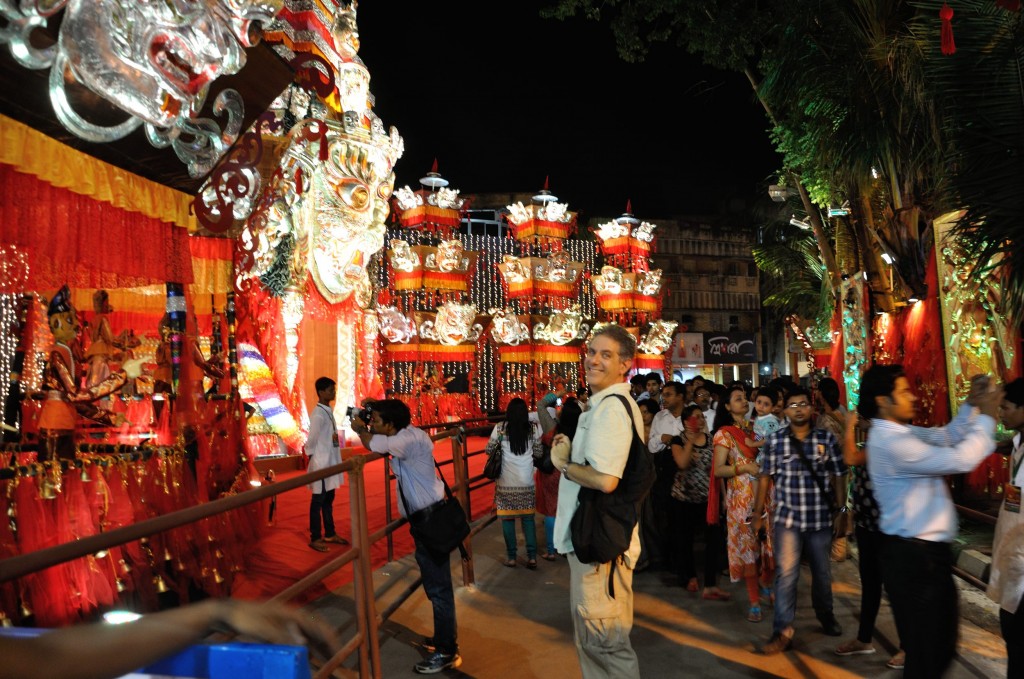 Insanely crafted, metal leaf-covered Buddhist temple-inspired pandal
Insanely crafted, metal leaf-covered Buddhist temple-inspired pandal
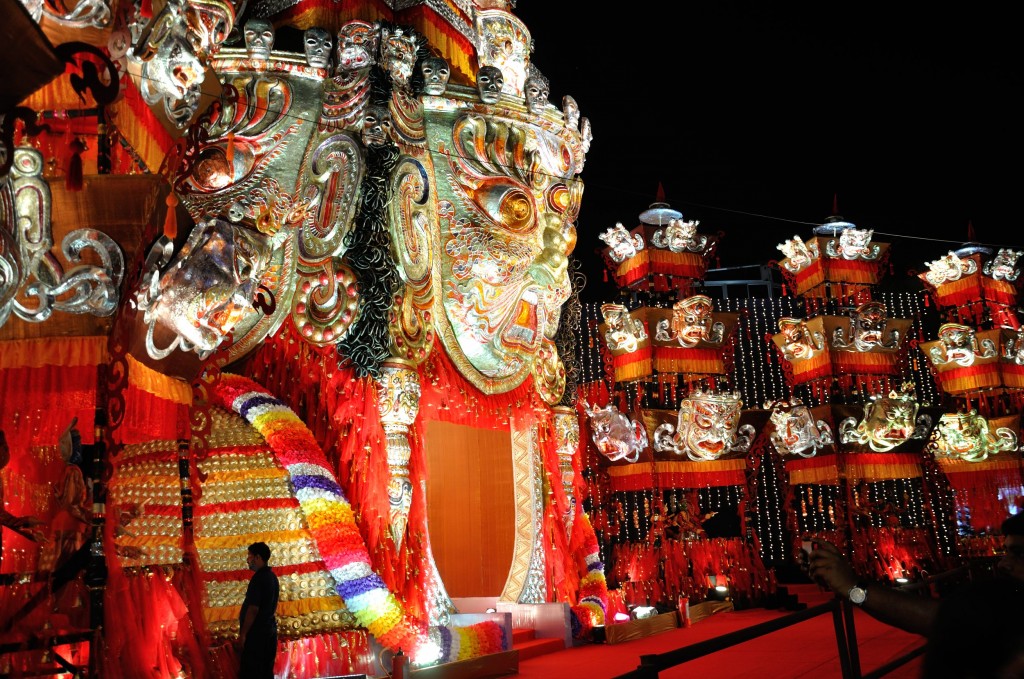
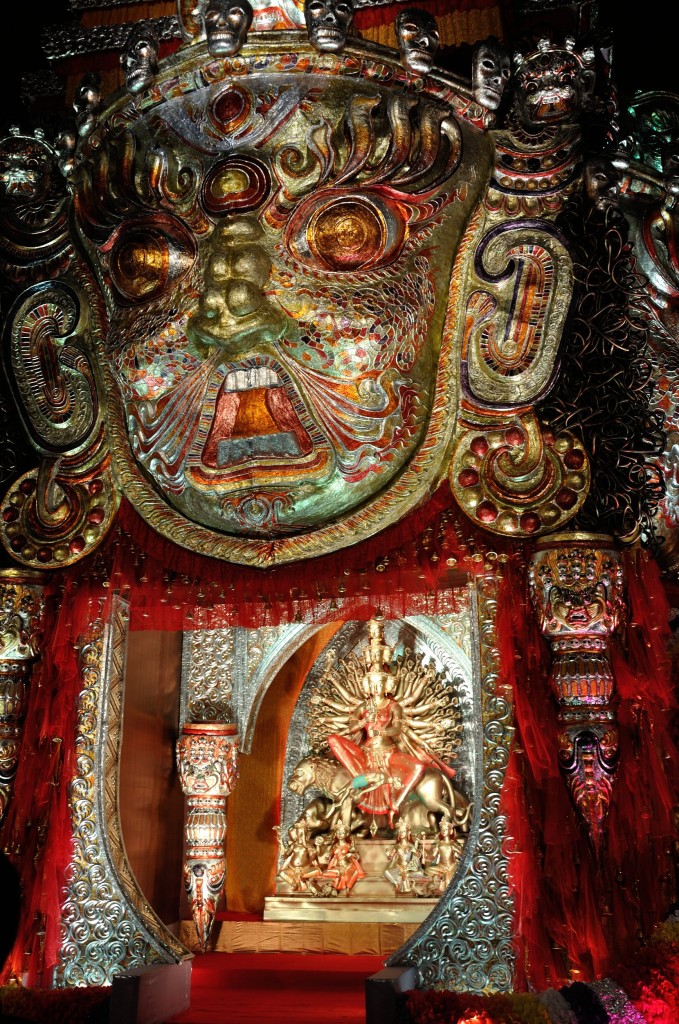
A glimpse of a golden Durga inside
Below is a pandal dedicated to late Bollywood actress Suchitra Sen, who died earlier this year.

A smaller, but charming pandal with figurative columns
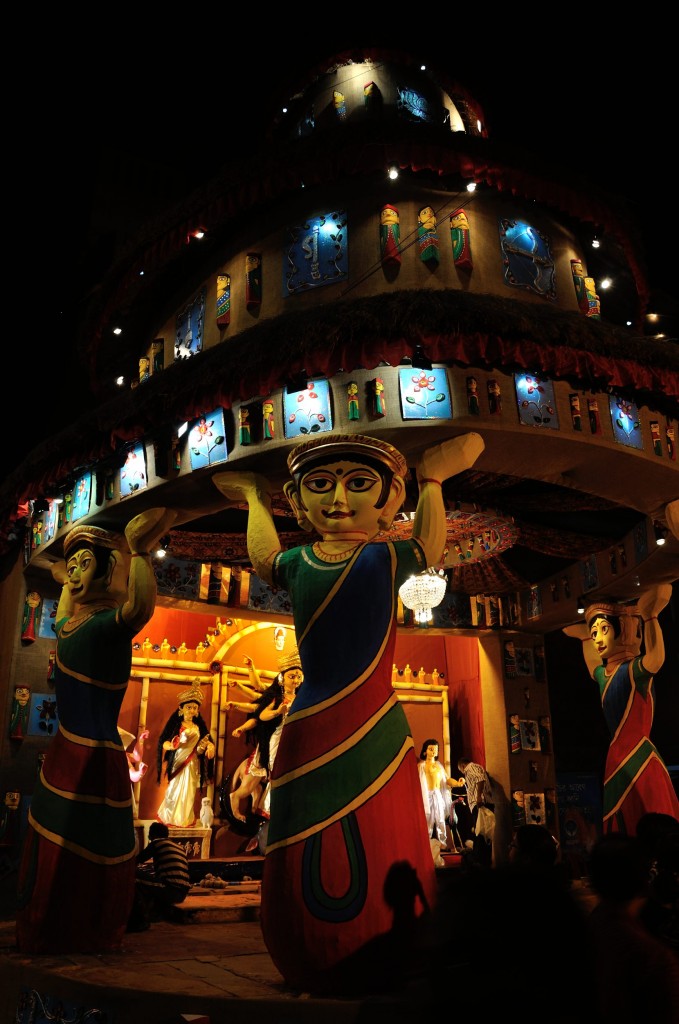
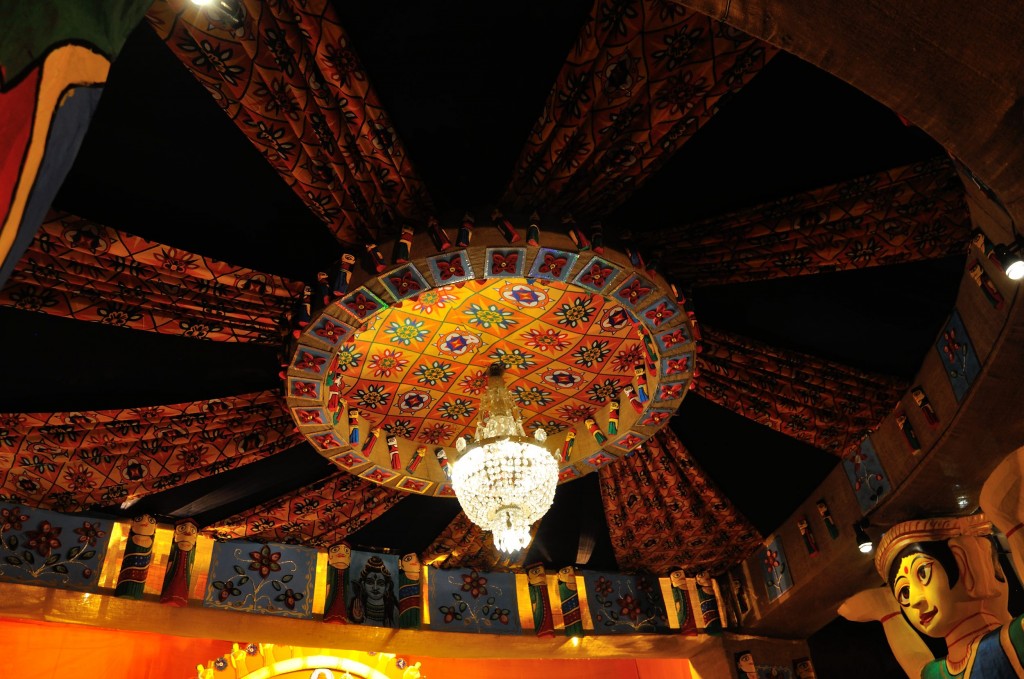
I’ve been enjoying the chandeliers of each pandal – they are often over the top!
Community-sponsored pandal
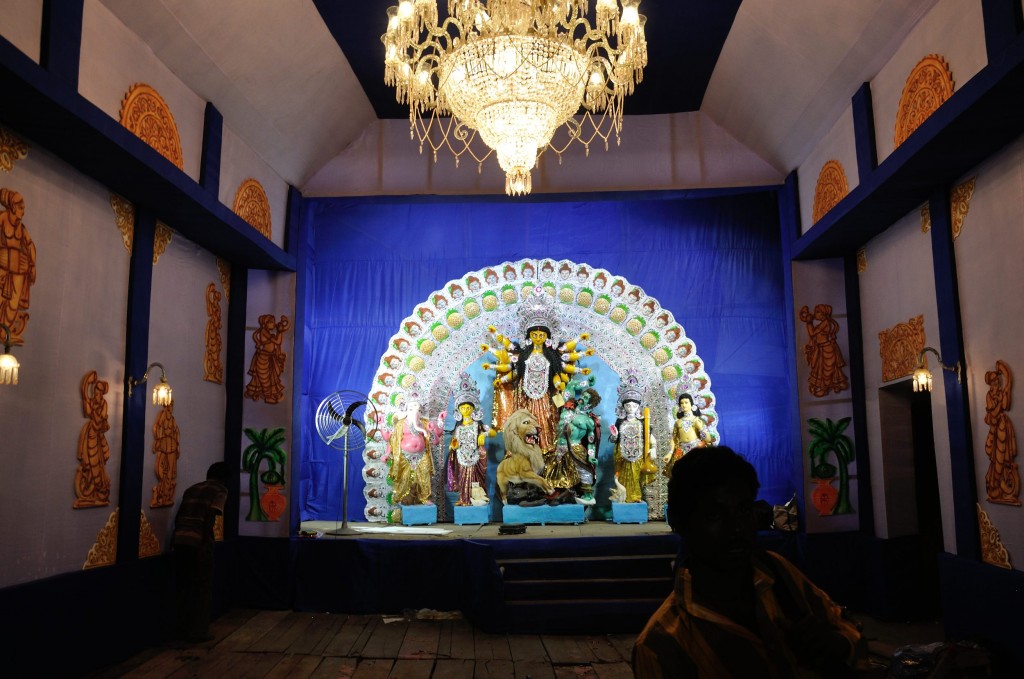

Walkway towards family puja pandal of a very sweet and welcoming retired doctor.
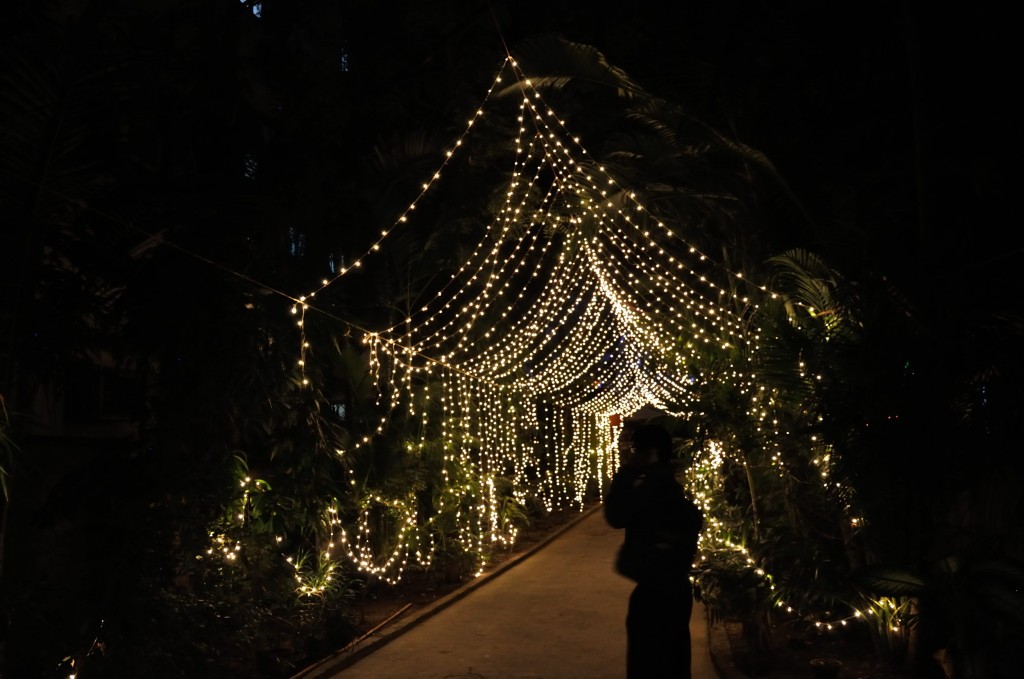
His Durga pandal is below.
And below is an example of some of the fabulously creative decorated walkways intended to entice viewers towards a pandal
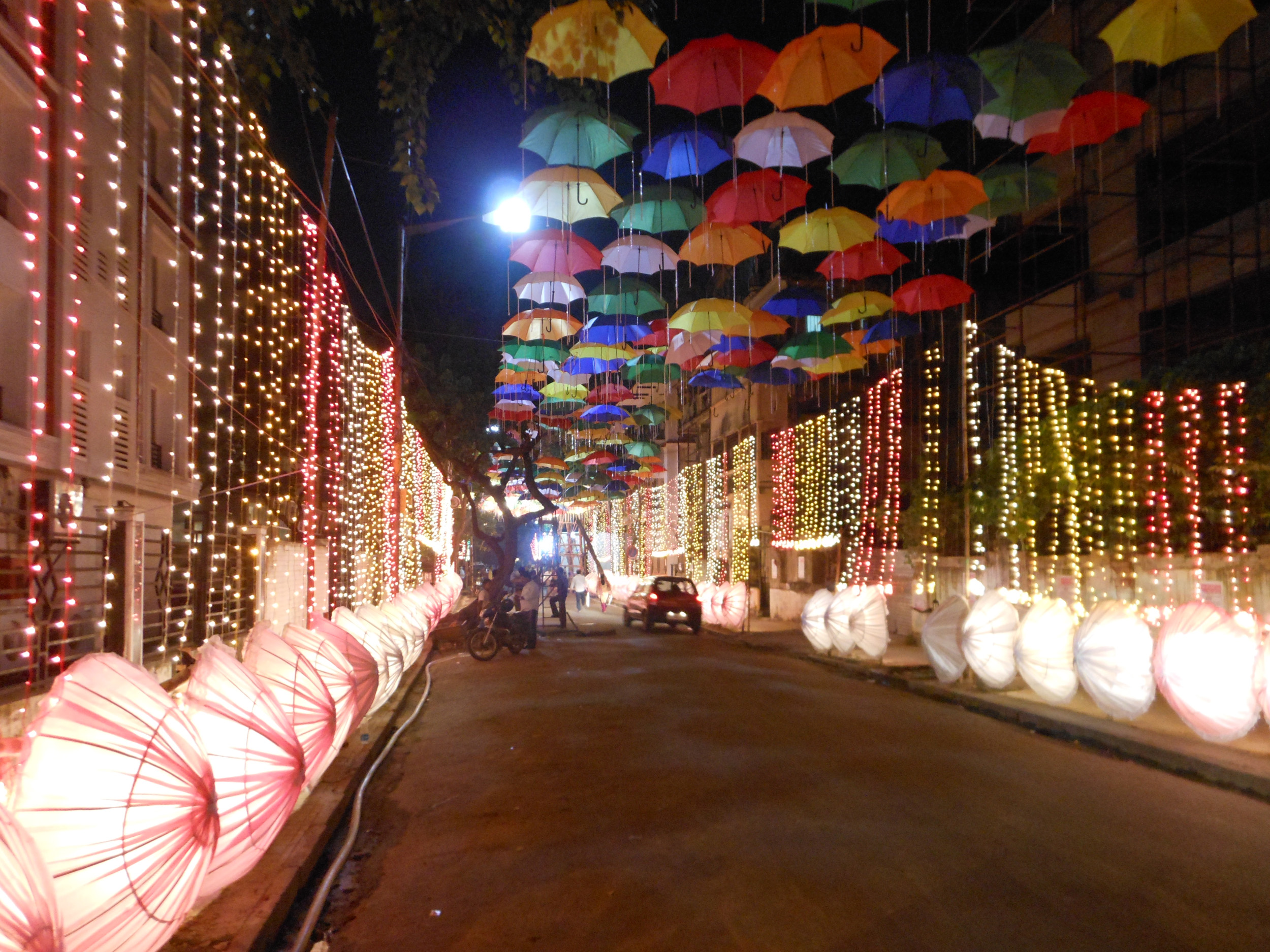
More Durga Puja tomorrow……

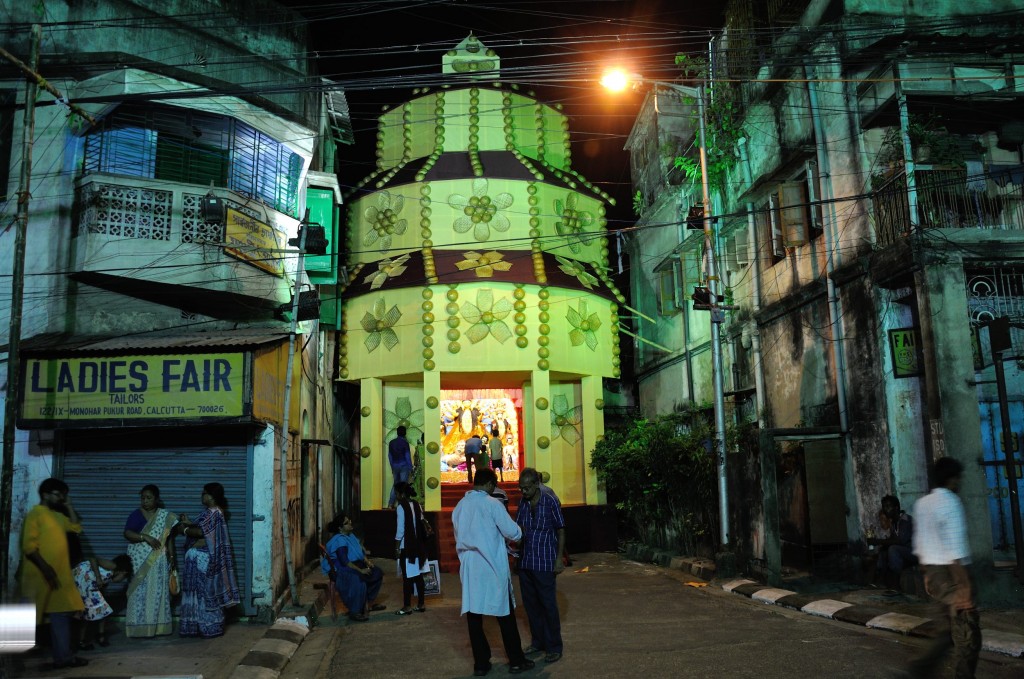

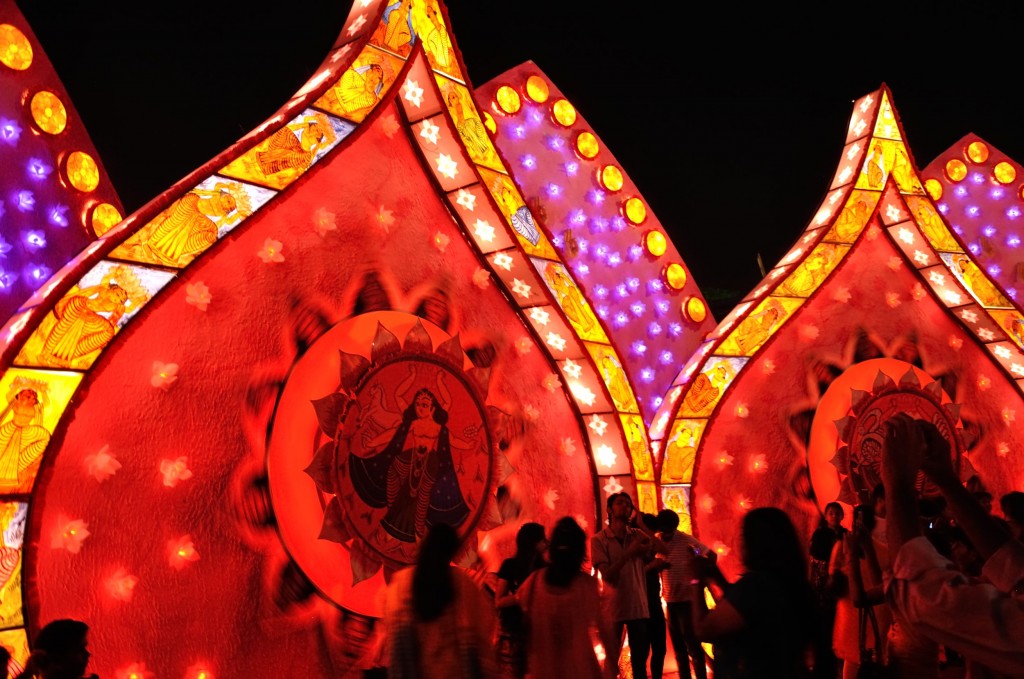

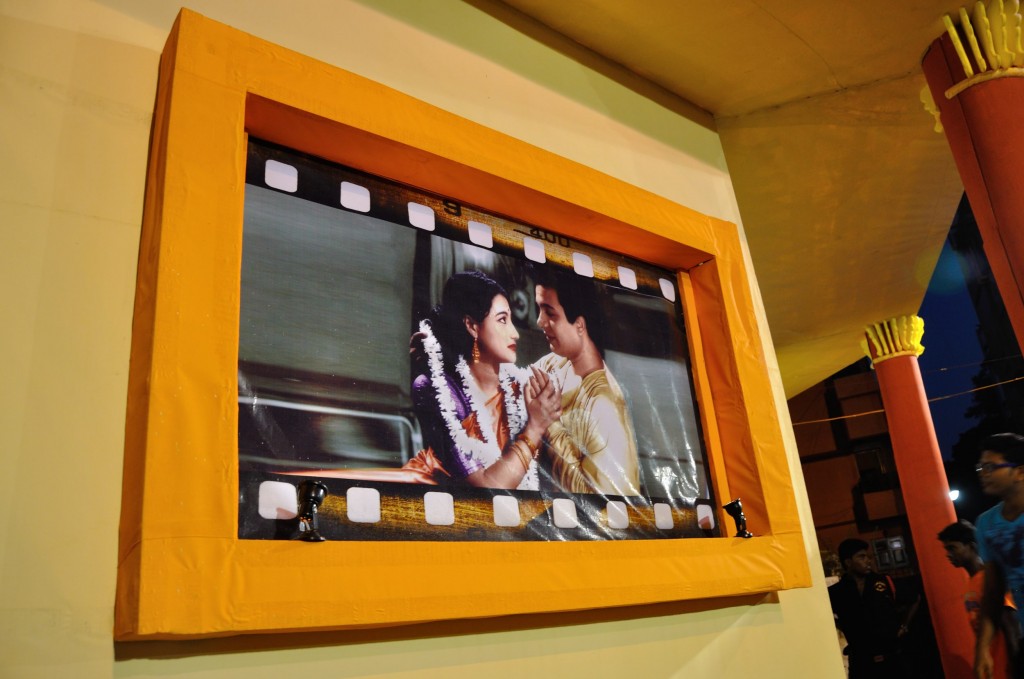
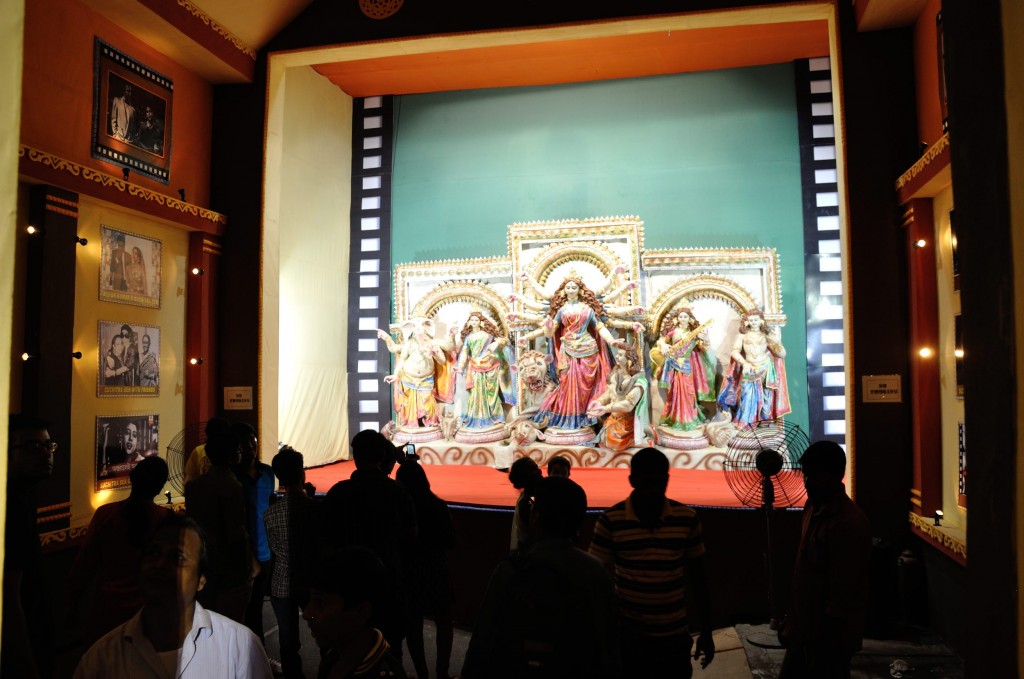
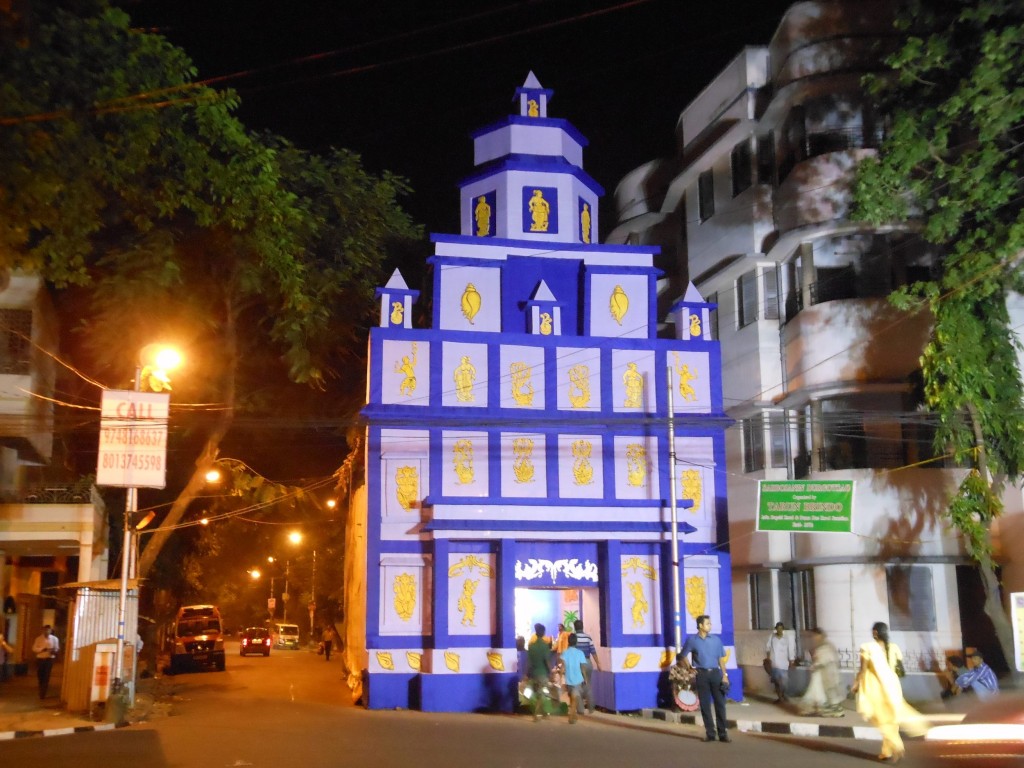
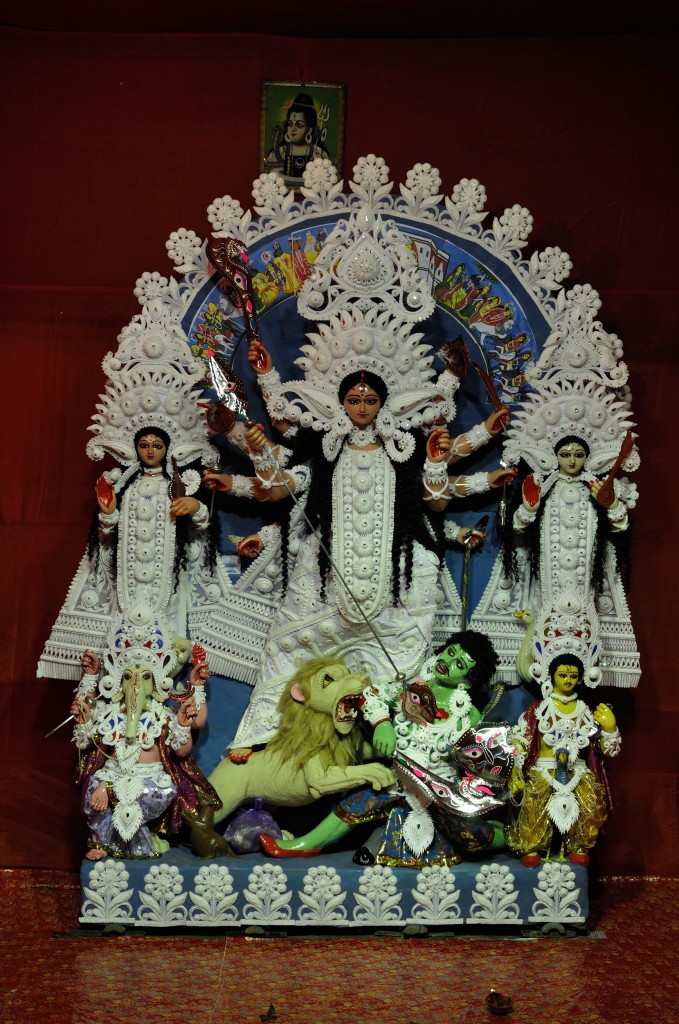
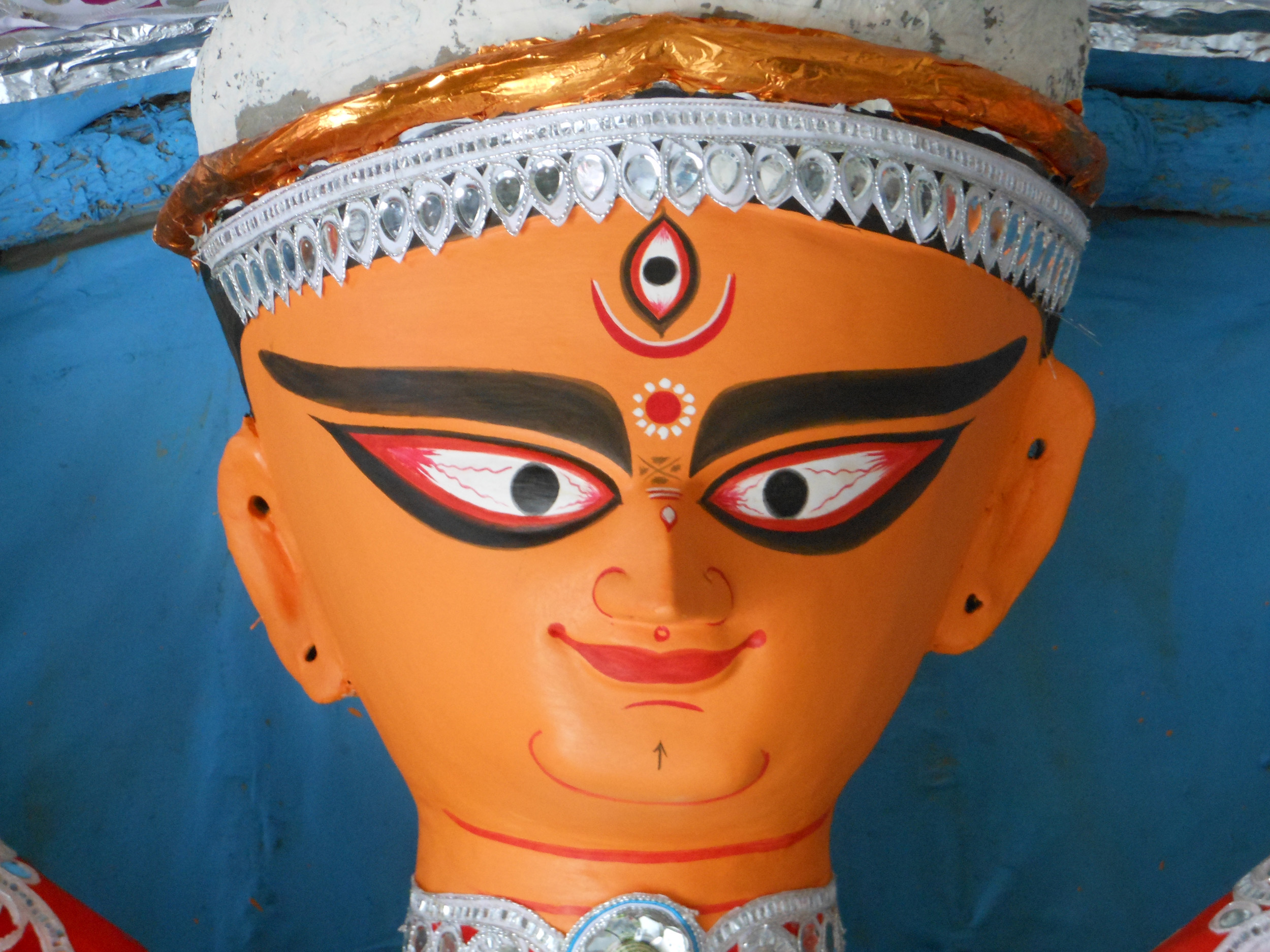
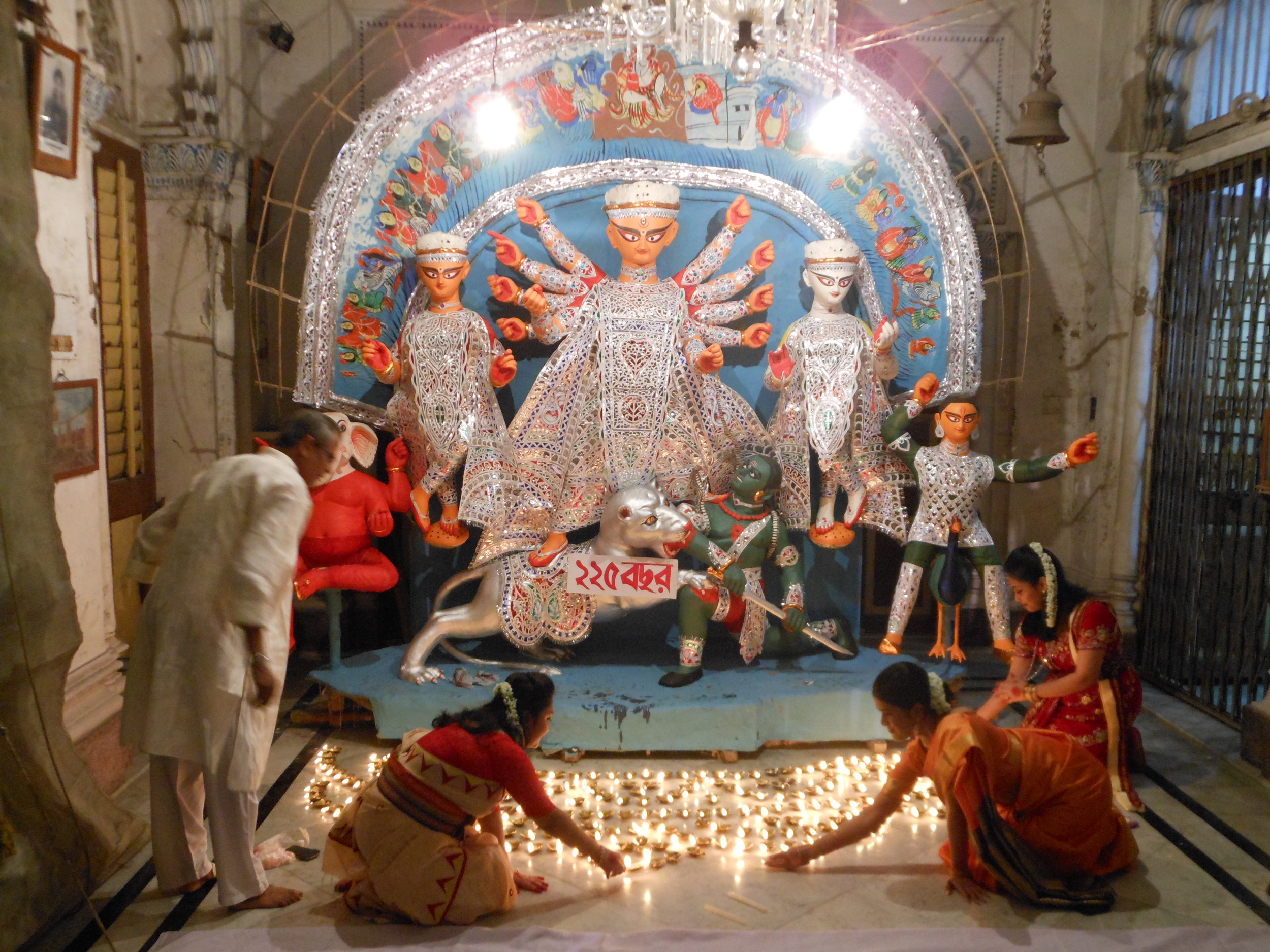
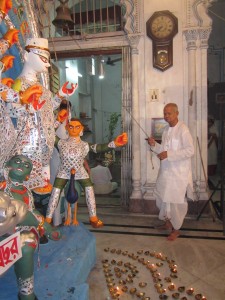
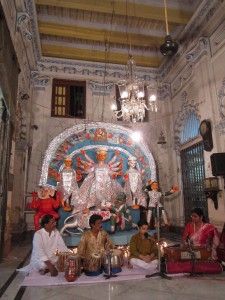




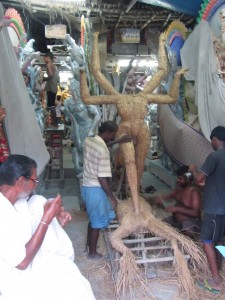
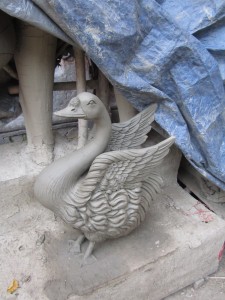
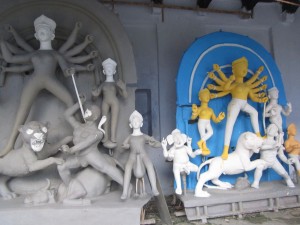

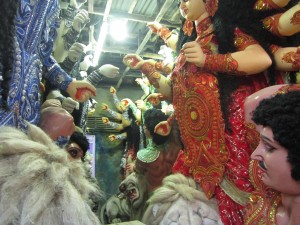







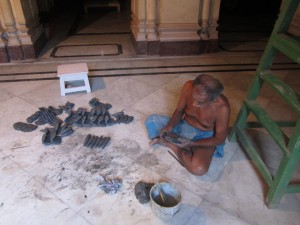

 Ganesha (above), now fully detailed and needing just one more hand!
Ganesha (above), now fully detailed and needing just one more hand!





